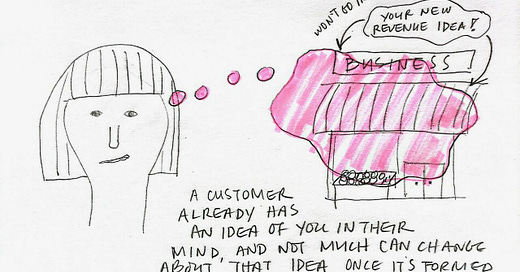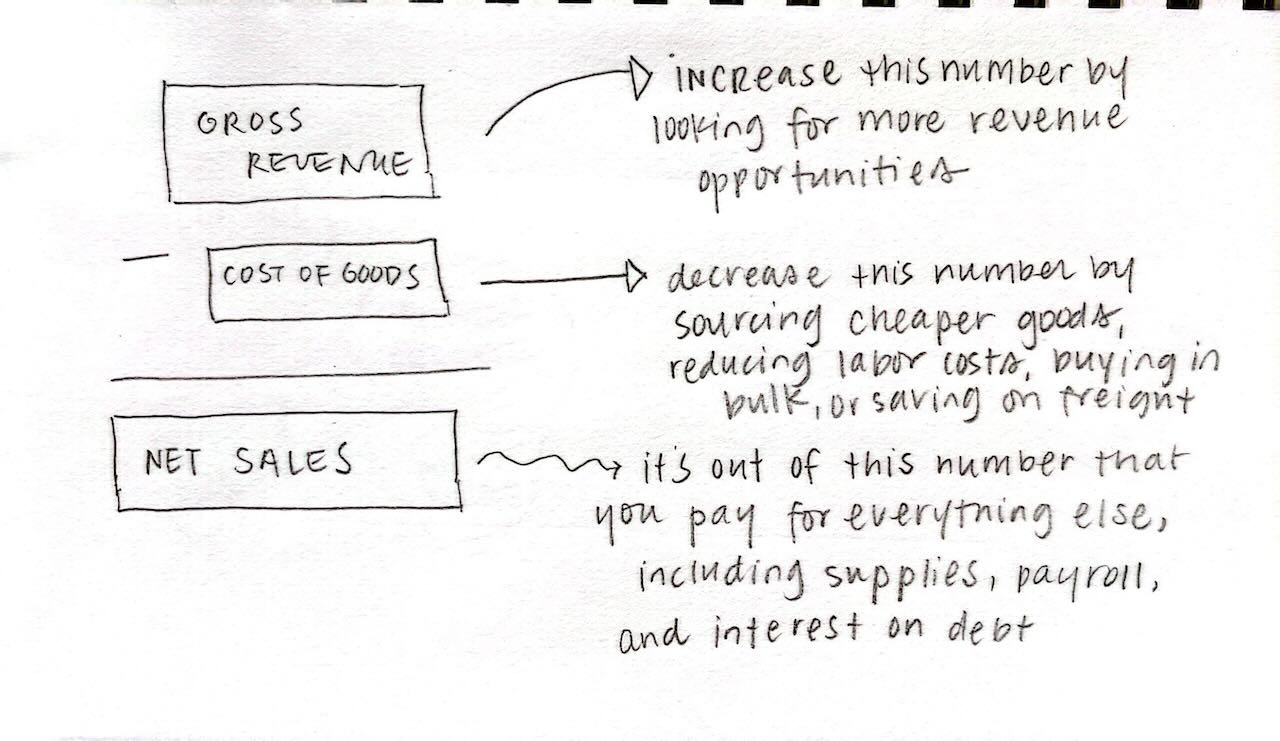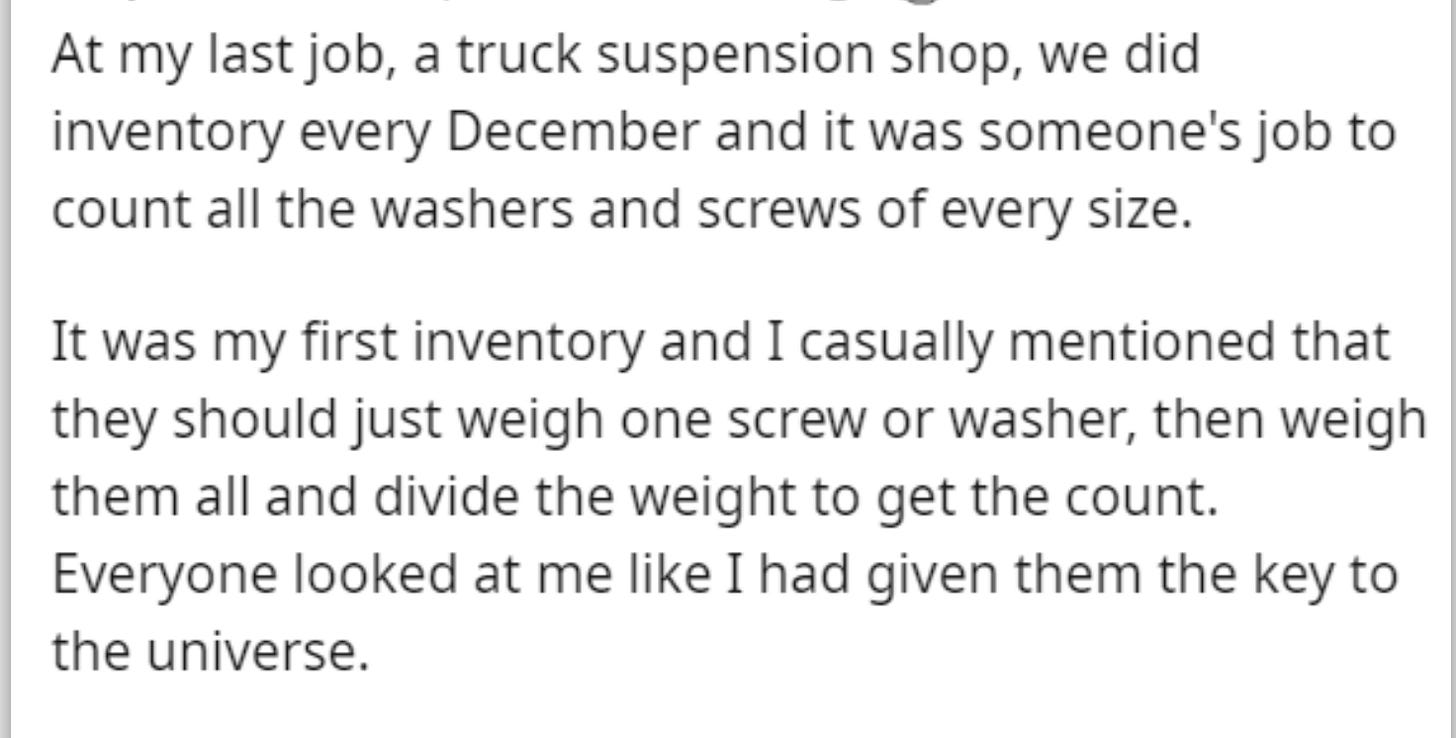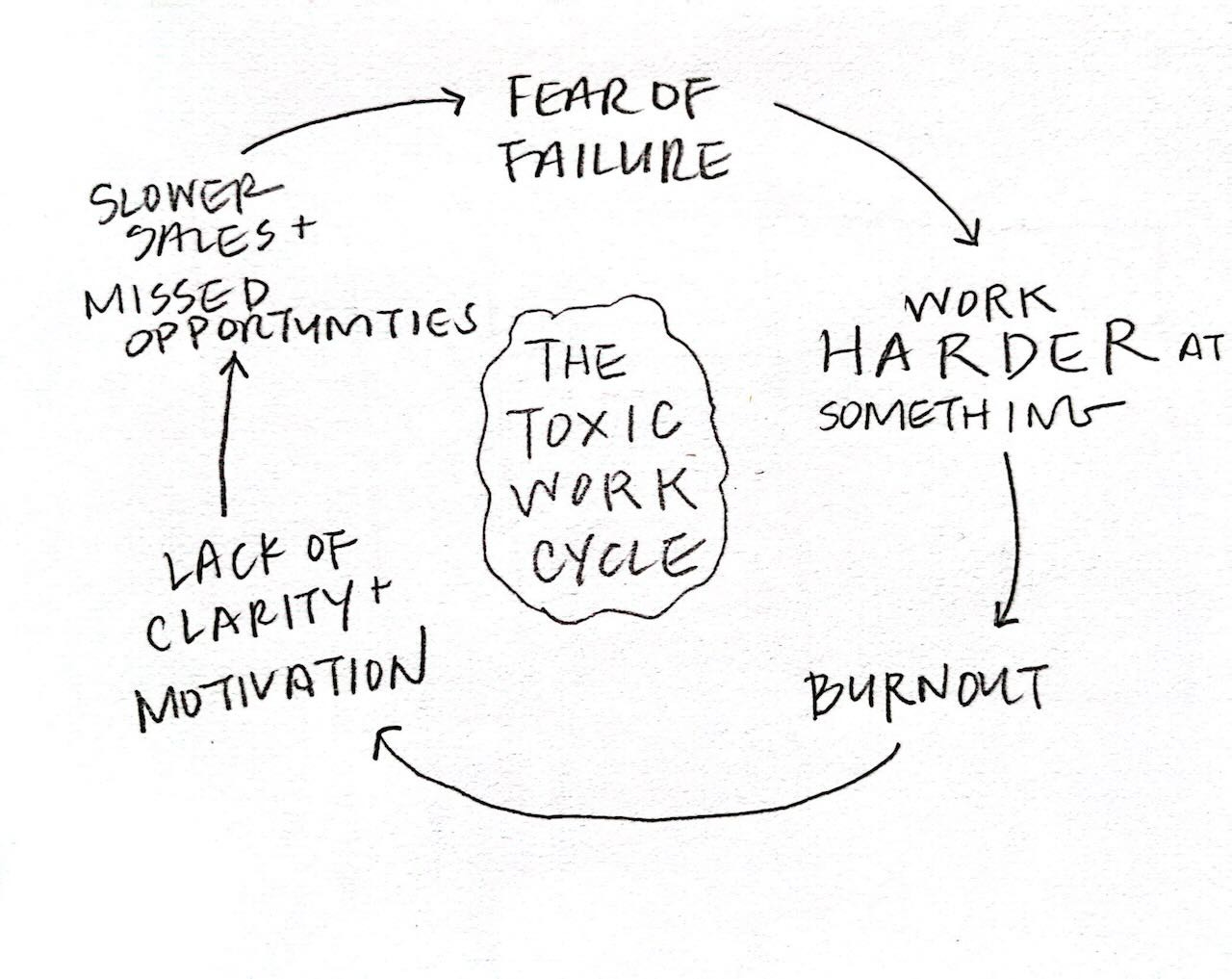You need to raise your prices [part one]
How to convince your customers, your team, and yourself that you're worth more
This is part one of a short series I’m doing on raising prices. This first part deals with why I think raising prices is the best—and sometimes only—option for small businesses to increase revenue. Scroll to the bottom to get a preview of future installments.
At some point in our business, we’ve all been caught in the trap of believing people will not pay more for the things we make and do.
Maybe it's because we know what something cost us, so it's hard to imagine a customer willing to pay 3 times more than what we paid.
Maybe it’s because we think people in our town would never pay what customers in wealthier markets pay.
Or, it could be that we settled on a pricing strategy when we opened that has solidified how we view pricing in our business for all time, even if it was rooted in miscalculation to begin with.
If, for whatever reason, the retail prices on your best selling products are still what they were five years ago, you probably need to increase them, maybe by more than you think. If you don't, you're not only leaving a lot of money on the table, you could be needlessly exhausting yourself.
It's time to work smarter, not harder
I don't know about you, but my 2024 sales are not much better than my 2023 sales, which were down 25% from 2022. It's rough out here! Many of us are scrambling to find ways to survive.
Some obvious reactions to a decrease in revenue in a down market like this are to:
Cut operational expenses (supplies, payroll)
Look for new revenue opportunities (like Fernseed adding classes)
But neither of these two tactics address gross margin, the ratio derived when you subtract cost of goods from your gross revenue. (To calculate your gross margin, divide your net sales by your gross revenue.)
It's in this top line on your profit and loss statement where the magic happens. It’s only in this top line, not in the operational expenses below, that any of your actions can effortlessly scale to increase revenue.

Scaling is not easy in single location, brick and mortar retail. In many ways our businesses are the antithesis of scale. We’re so small, it’s hard to find places where there’s anything but a 1:1 relationship between effort in and dollars out. But the gross margin is where it’s at. If you increase your gross revenue without increasing your cost of goods, you’ll have more net sales out of which to pay for your supplies, labor, and—dare to dream!—reinvest profits.
How to increase gross revenue without really trying
People have a real aversion to noticing ways work could be easier. But the internet is filled with funny stories of people who started new jobs, noticed inefficiencies in the way whole groups of people were already working, and suggested simple improvements that changed everything. These dramatically simple shifts can be disorienting for some, but that doesn't mean working smarter, not harder, is cheating.
If you, like me, have been conditioned to trade hard work for dollars, you may struggle with spotting new revenue opportunities that don't require additional labor. My brain is trained to think the only "legitimate" way to earn more money is to work harder. But folks, this simply isn't true.
Working hard—putting in more labor—increases your cost of goods or expenses (depending on where you factor in labor), so while you may increase revenue by working harder, you’re also increasing expenses, so your profitability stays the same.
Increasing top-line revenue isn't about struggling to establish new verticals. In other words, it's not about coming up with new products or services your existing customers, or perhaps a new set of customers, will buy from you, and working really hard to bring those to market. It's about charging more for the products and services that are already selling.
Yes, I'm talking about raising prices.
I'm telling you, it works. And after a certain amount of time in business, it's probably the only thing that works.
Sorry to tell you, you’re out of other options
I wrote last time about deciding once and for all that we were no longer going to offer classes at Fernseed. Classes, on everything from terrarium building to flower arranging, weren't selling at the volume we'd hoped. It wasn't worth the extra $350 they net each month for the amount of work we put into hosting and promoting them.
Why weren't classes selling at Fernseed when we have an email list of nearly 5,000 local people interested in plants and flowers, many of whom have literally told us they want classes?
I've thought long and hard about this. It was like a wall I couldn’t scale, no matter how hard I tried. Then one day it clicked.
We can't fit any more good ideas into this business. We're at capacity.

This isn't because we are out of good ideas! We're always creating and changing. But at a certain point, our customers stop paying attention.
Our customers only want from us what they are used to getting from us: plants, flowers, wedding flowers, pottery, potting mixes, and a potting service. Keep in mind we didn't launch with all these products and services! We added flowers in our third year of business.
But when our business was new we could still launch new revenue streams because the idea of what Fernseed was hadn't calcified in the customer's mind yet. When we tried to launch classes again in year five, the customer brain mold had already solidified. There was no more room for Fernseed to change.
If you don't believe me, think about the band U2 for a second.
A lot of fans gave up on U2 when they released Achtung Baby in 1991, because it was such a departure from their previous sound. But Achtung Baby had a lot of hits, including "Mysterious Ways" and "One," two of the most famous U2 songs of all time. There was still room for U2 to change back then. Flash forward to 2014 when the band teamed up with Apple Music to release their album, Songs of Innocence, for free onto every device with iTunes. The entire album just appeared in half a billion people's music library and yet... no one wanted it. All but the hardcore U2 fans were pretty much done with the idea of whatever U2 was in 2014. The band couldn't give their music away without people trying to delete it like junk mail.
Most people prefer to have the same experience every time they engage with something, so they’ll ignore what doesn't fit into their calcified perception. This is why things like Crystal Pepsi fail. People just can’t. They don’t need that from you! They don’t want new U2 songs, they want the old songs. They’ll get their new songs from a new band they haven’t calcified their ideas about yet. They’ll get their clear soda with a name that isn’t “Pepsi” because Pepsi is brown.
What does this mean for you as a small business? It means you’re limited in the number of ways you can be different for your customers before they ignore you.
You have probably already hit this limit if you’ve noticing a law of diminishing returns on any of your brilliant new ideas. When you pair that with an economic downturn, you now have limited revenue options with limited sales potential.
What does this have to do with raising prices?
It means that even if you are an honorable worker bee and not a greedy capitalist, your efforts to work harder to earn more money may go unnoticed. Don’t fall into this trap!
Maybe you don’t have to increase revenue right now because your business is coasting along through this economic downturn and that is great! In that case, coast.
If you cannot coast because you are skating by on razor thin margins, losing money, or breaking even, then listen.
You either need to increase your revenue, or profitability, or both. In an established business, you’re not going to do this by coming up with new ideas. You have to go to your existing revenue streams and either sell more of what you’re already selling (increase unit sales) or charge more money on every unit (increase margins).
Increasing unit sales is going to be tough in a down market, because you can't fight the cardboard box index. I've written about the cardboard box index before, and how Fernseed's sales aligned almost exactly to this key economic indicator. When your sales are limited by economic forces beyond your control, there's little you can do to sell more units.
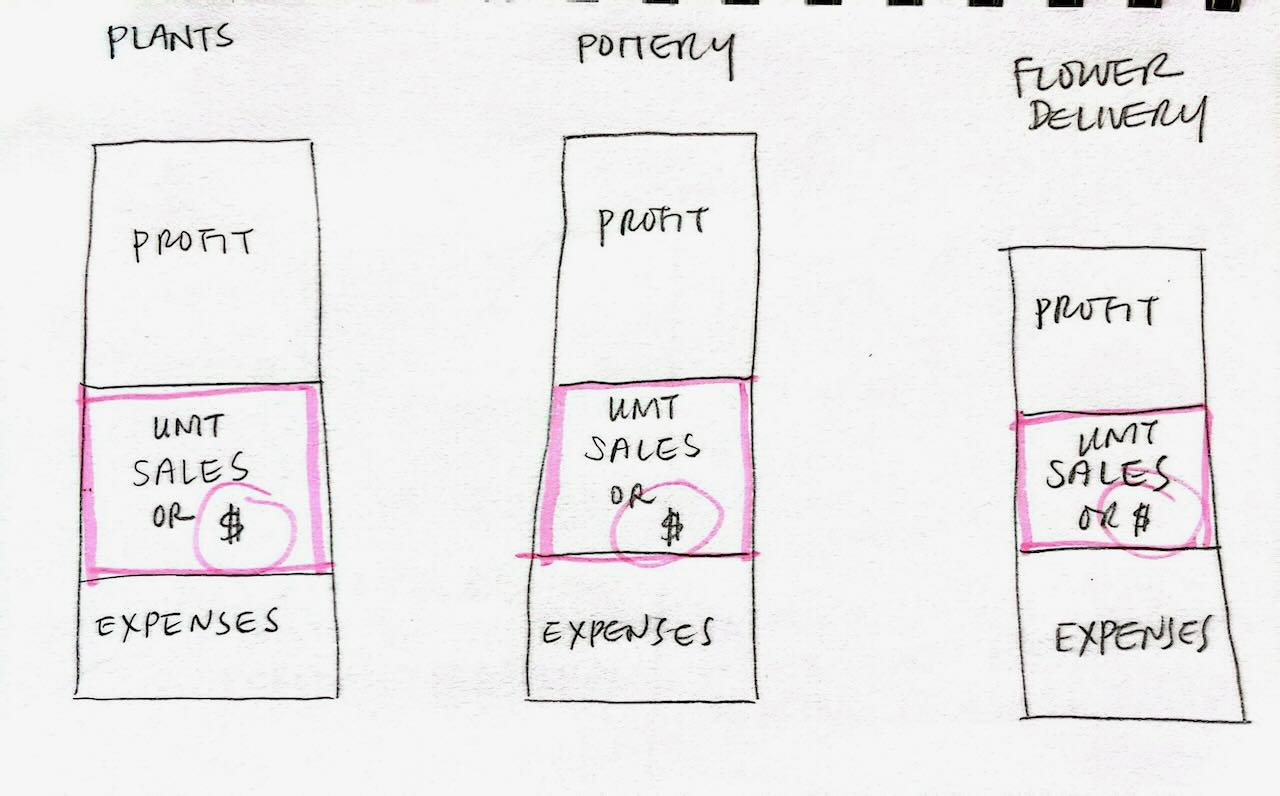
This means you can try to cut expenses to limit profitability, but I would guess that most of your suppliers are also increasing their prices, so this, while not impossible, can be a challenge.
If you want to increase your revenue you have one choice: charge more for the products and services you're already selling.
Now, I hear you. You might expect that your customers will not pay more for your products or services because they’re used to getting something for less. And you know what? You’re right. You will lose some customers if you increase prices and they react poorly.
However in the next installment of this series, I am going to use some basic algebra to demonstrate how insignificant the impact of that loss will be on your business. I’ll also talk about how to increase prices in a way that doesn’t disappoint anyone, and how to talk about that with your team and customers.
In future installments I’ll show you some case studies from Fernseed, where we succeeded in increasing revenue by raising prices and not losing sales. I’ll also include examples from a few more businesses, so you know it’s not just Fernseed out there raising prices.
Finally, I’ll conclude the series by examining different pricing strategies for retail and product businesses, and how you can use basic behavioral psychology to earn more revenue. (Yes, you really should end your prices in 9.) I’ll dig into detail on one pricing strategy we’ve recently implemented at Fernseed, and give some examples of changes we’re still in the process of implementing as I think more strategically about pricing.
Have you implemented price increases in your business? How did it work out? Do you have strong feelings associated with price increases? Please share!

